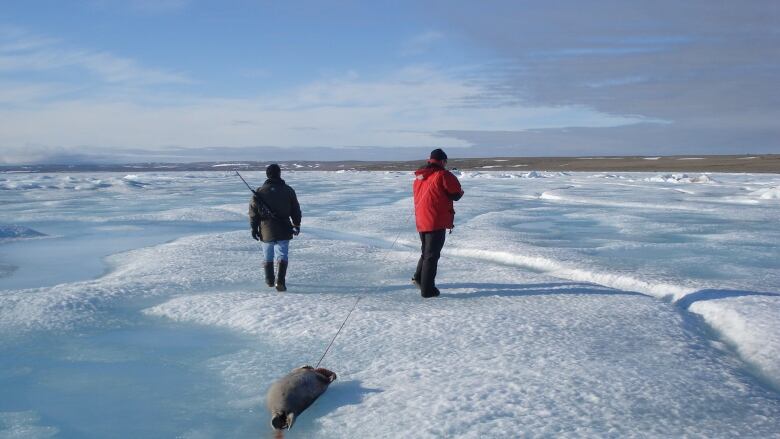New chemicals may be less toxic for Arctic wildlife: researcher
Its really nice to see that some of the things that we intended to do are actually working'

An academic at Carleton University says hispreliminary research in the Arctic shows some newer chemicals used in many everyday items likepesticides and clothingmay be better for the environment and safer for wildlife than the original persistent organic pollutants they replaced.
Adam Morris, a PhD graduatebased in Ottawa, travelled to the North each summer from 2007 to 2011.
He didresearch in Resolute Bay,Pangnirtung,GjoaHaven, and Yellowknife, working closely with local hunters to gather water and plant samples and toexamineArctic char, seal, caribou, wolves and polar bears.

And what hefound surprised him.
Morris, who delivered a talk this week at theNunavutResearch Institute, sayshis preliminary findings show that thenewer chemicals, while still toxic, are breaking down more in the ecosystem and that they may be metabolizedmore easily by wildlife. That means the chemicals aren'tbuilding up as much in the Arctic environment.

"It's really nice to see that some of the things that we intended to do are actually working," Morris said.
The chemicals Morris studied include PBDEs (polybrominated diphenyl ethers), flame retardants used in almost everything from clothes to furniture and computersand endosulfan, an insecticide that increased in use due to bans on other pesticides.
The chemicals have since been added to the list of toxins considered Persistent Organic Pollutants under the Stockholm Convention and are being phased out globally, but Morris's work suggest they aren't biomagnifying in the food chain to the same degree as the original POPs banned in 2001.
Nunavut hunterstill concerned
Peter Amarualik Sr., a hunter in Resolute Bay, Nunavut that's assistedMorris with his research, says the newinformation is only somewhat reassuring.
"These are the animals that we eat here,"Amarualik said. "What people throw out there seems to be showing up in our animals.

"It doesn't look good."
But Morris says understanding what's happening to plants and animals so far away from the source of these contaminants i.e. clothing and furniture factories and warehouses in different parts of the worldis extremely significant.
"It's a pretty unique system," Morris said."Alot of people in the south still don't really understand that contaminants get up here and build up in the food chain."
Morris says toxins travel from the South to the North through what is called the grasshopper effect or global distillation.

The chemicals accumulate inwarmer areas near the middle of the Earth and eventually travel North. Theyend up hopping (like a grasshopper)from lake to lake and current to current until they reach the Arctic.
Morris says many of the contaminants break down along the way, but the most persistent pollutants make it all the way to the Arctic ending up in the ecosystem and affecting the population.

Amarualiksays he's still worried about the effectspollution and climate change have already had onhis Arctic home.
"What they have done over there has done enough damage," he said."They have to start cleaning up."
Clarifications
- This story has been updated to clarify that the chemicals in this study are in fact toxic and are being phased out globally.Oct 05, 2016 3:53 PM CT












_(720p).jpg)


 OFFICIAL HD MUSIC VIDEO.jpg)
.jpg)



























































































